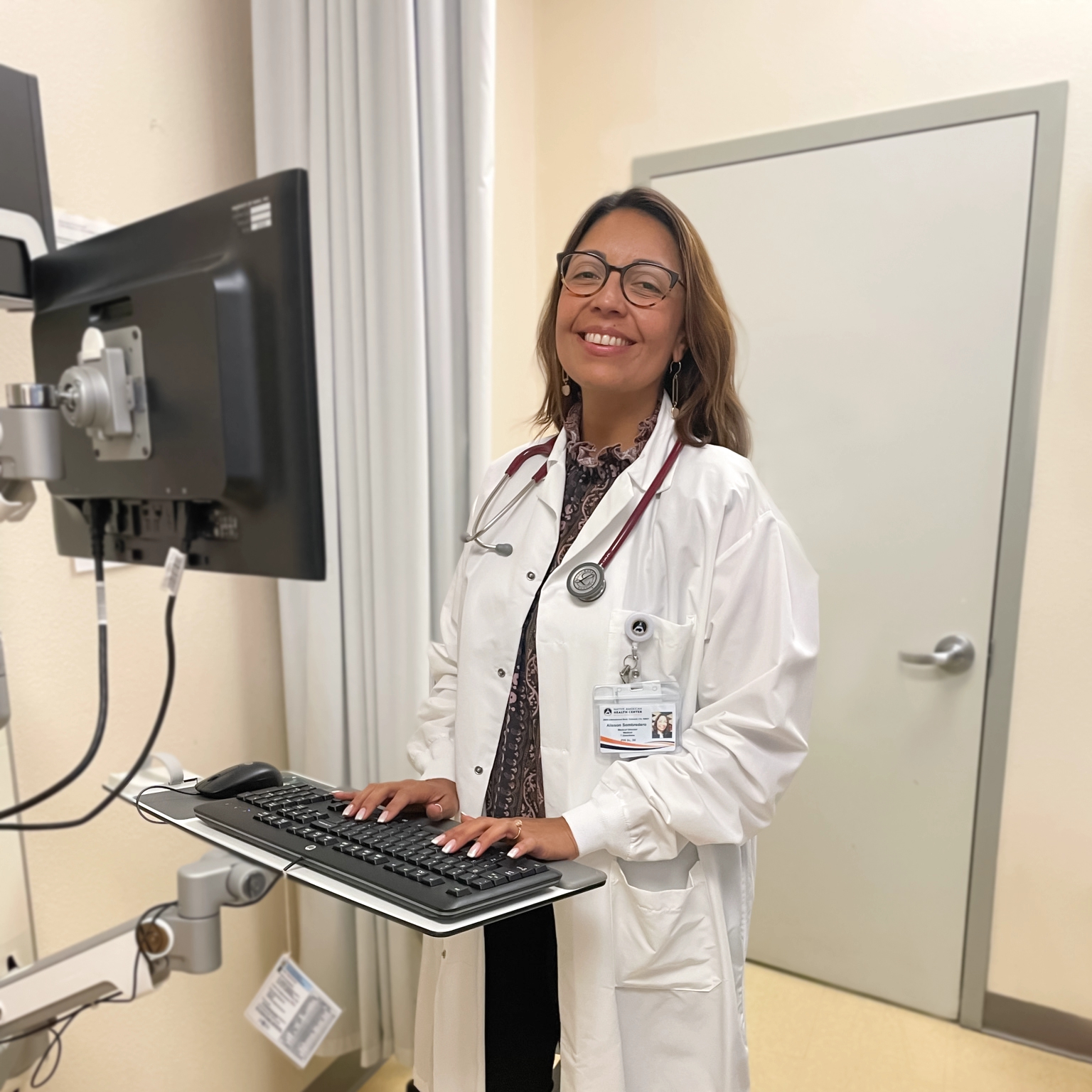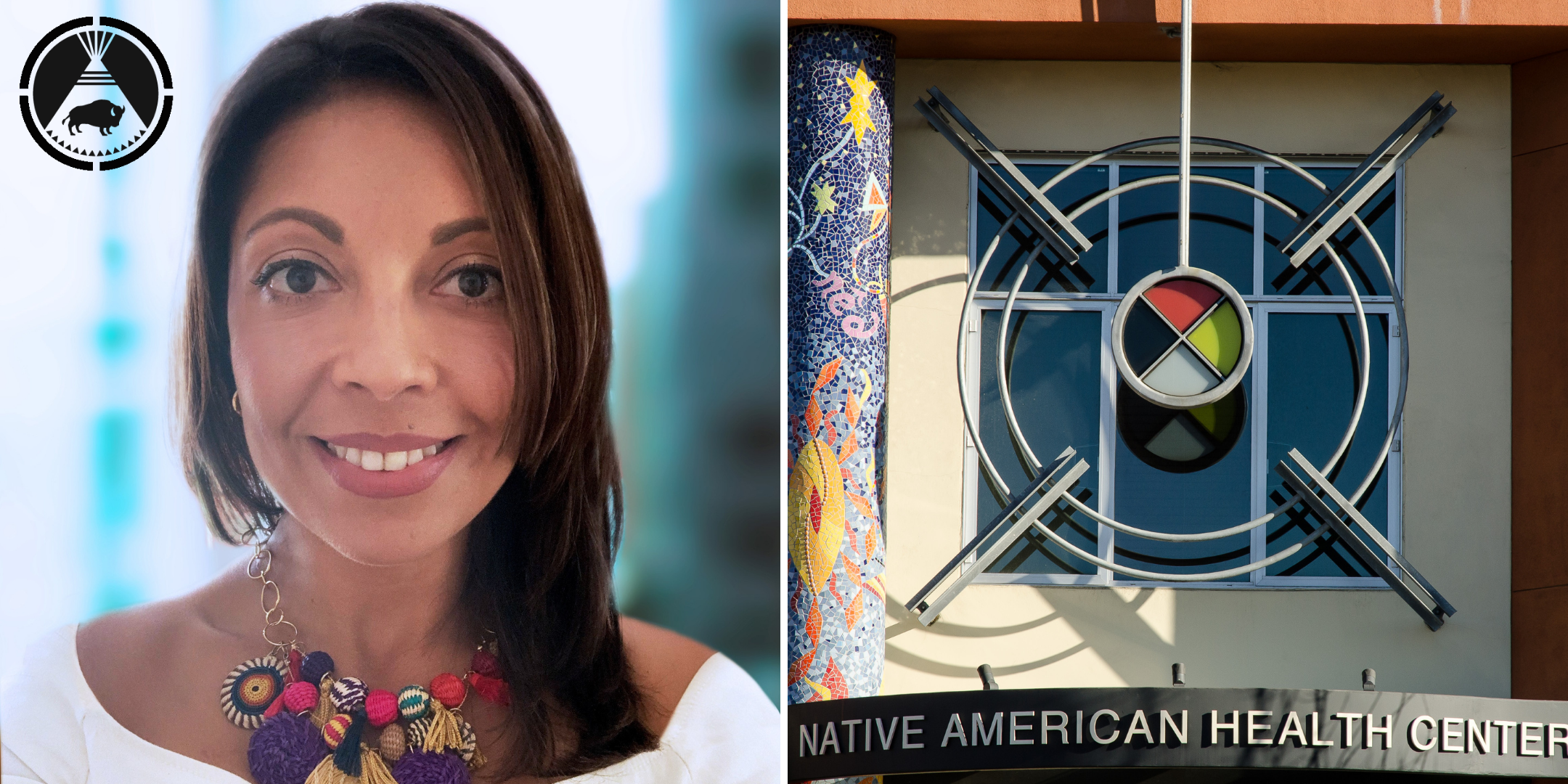Native American Health Center Sits Down with their new provider
Native American Health Center (NAHC) recently sat down to interview their new Medical Director, Dr. Alisson Sombredero, who joined their team in March 2022.
Tell us a little about yourself.
I am a woman from Columbia, South America, and I have been living in the United States for 16 years in the East Bay. I decided to go to medical school because I love helping people. When I was in med school, I thought that I would be a GYN and then a cardiologist, and then naturally, for some reason, I thought that I was going to be a pathologist. But when I was in my clinical rotations, I met a gay couple. One of them was hospitalized with AIDS and ended up dying. He was 21 years old, and I was 21 at the time. After his diagnosis, I had to ask his partner to get tested.
to take care of communities of color … is so fulfilling for me. -Dr. Sombredero
When I got the test results that night, I went home and thought, you know, if it happens to me, if my partner infects me, I would be so, disappointed and sad. I would not be able to continue to be with this partner. The next day I went back to the hospital and told the patient and the partner their results. They hugged each other, cried, and said, “It doesn’t matter what happened. This is what is happening right now. We love each other, and we will be with each other until the end. We will support each other.”
I was in awe, and I thought, that’s what I want to do. I want to do HIV medicine. I want to do community medicine. I want to be surrounded by patients. When I see patients, and they thank me for what I did, for my advice, what I had to tell them, or the time I spent with them, I also thank them because they are teaching me so much. So I think this pathway that I have taken to be a physician, to take care of communities of color of communities that are disenfranchised, is so fulfilling for me. It’s just absolutely incredible. It makes my life so rich, and I really hope that I can make a difference for them. That’s why I am working at Native American Health Center too, because there are so many patients who need a little help. There are so many stories in so many things that they share with us that makes us really think about who we are and who we want to be. I want to be like them. I want to be like that couple that I met. I want to have that—that love that is just bigger than anything.
You have a lot of experience in the public and community health realm, tell us a little bit about your work prior to coming to NAHC.
I did my fellowship in HIV medicine at San Francisco General Hospital at the University of California, San Francisco. Before that, I did my residency at Highland Hospital. So my first experiences in the U.S. started in the county systems of San Francisco and Alameda County. It gave me a glance into how important public health is and how fundamental it is to deliver the best care that we can and have accessible care for those who really need it. That showed me that we are the safety net, and we should strive to have excellent quality of care and access to care because the need is there.
I have also worked with the East Bay AIDS Center, a semi-private place where patients who do not have insurance can connect with care. At Highland, I was an attending, and we had considerable involvement with the consortium and the Department of Public Health. I then became the Chief Medical Officer of San Francisco Community Health Center, which is located in the Tenderloin in San Francisco. That was one of my biggest experiences working in public health because we had many partnerships with agencies like Glide, the consortium in San Francisco, UCSF, and the Center for Vulnerable Populations. We needed to ensure that we would be able to meet the patients where they were at, deliver street medicine, and develop programs that were very tailored to the population, including medication-assisted treatments and accessible Hepatitis C and HIV treatments. We also had incredible partnerships with the Department of Public Health in San Francisco, Glide, and UCSF, which made it possible during the pandemic to have incredible vaccination events that helped us vaccinate 85% of the population in the Tenderloin.
What is it about NAHC that drove through you to its work?

The people who work at NAHC are truly committed to the mission and the community. So that speaks highly of the organization. And I think the places where the clinics are located, right in the Fruitvale area and the Mission area, are strategically located, so we can deliver a very high quality of care and accessible care to populations that really need it. The fact that Native American Health Center has in terms of demographics, 70 to 75% of Latinx people coming to the clinic makes it very appealing to me, given the fact that I come from a native Spanish-speaking country. I want to make sure that these patients have culturally competent care.
I also like that NAHC is highly invested in community wellness because I truly believe that a big part of being healthy is being connected with our communities. It is beautiful to see the intersection of wellness and the different clinical services such as behavioral health, dental, and medical, as well as community wellness events and programs like Food as Medicine. I think that it is a fabulous organization, and the patients that are coming to our doors are patients who highly need care, and we have the resources to take care of them.
When working with patients from marginalized communities, how do you help empower them? And how has that empowerment contributed to the overall health of the community?
In marginalized communities, when the health system fosters communication, education, and taking the time to make sure that we deliver the message in a culturally appropriate way, we can truly empower the patient. Historically, marginalized cultures have been driven into a paternalistic medicine model where the health professional says what needs to happen and the patient needs to follow the instructions. But providing education and mindful care for marginalized communities that are respectful of their culture or cultural background empowers patients and gives them the control to decide. And hopefully, it will be an informed decision. The change that needs to happen, whether exercise, better eating habits, or taking medications, comes from within, instead of being something that is commanded by a health professional. This way of care helps develop a relationship of peers—a person advising another, instead of having a doctor up here and a patient down there looking up. When the patient is empowered, there’s this connection between human beings. The patient can make more sustainable decisions that will impact their care. And when a patient is a part of making the decisions about their care, there are better outcomes. When we provide the time and tools and educate individuals so that they can understand the reasoning, they’re going to improve their health. This can set off a chain of action, where one person makes a change, and then possibly the whole family makes a change. And when families make positive change, communities get healthier.
You can learn more about Native American Health Center HERE.
